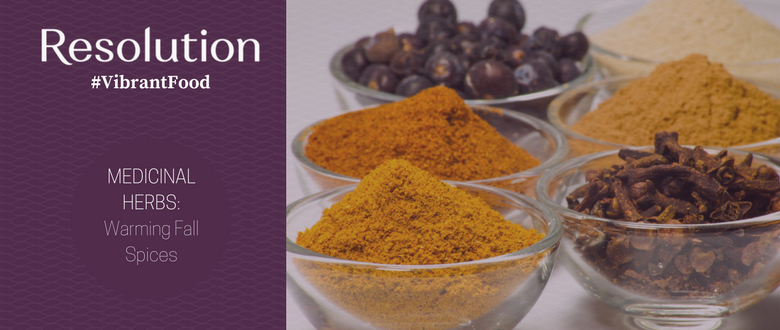What we eat can affect how we feel and how our bodies function –our Wellness– in profound ways. Our food choices impact us both immediately and over the long-term.
“Let food be thy medicine and medicine be thy food.”
—(Attributed to) Hippocrates
As part of our vision for Collaborative Wellness, at Resolution we advocate for what we call #VibrantFood: food that is Flavorful, Local, Seasonal and Medicinal.
Adding Vibrant Foods to your diet whenever possible is a great prescription for increased Wellness! Learning more about Vibrant Foods (and Herbal Medicines) can empower you to make great choices about what to feed yourself and your family, which is why we’re excited to share some information about three amazing root plants that are healing, nourishing and easily accessible.
Ginseng, Ginger and Turmeric can be used as both food and medicine (including for stress management!), and you probably have at least one of them in your kitchen already.
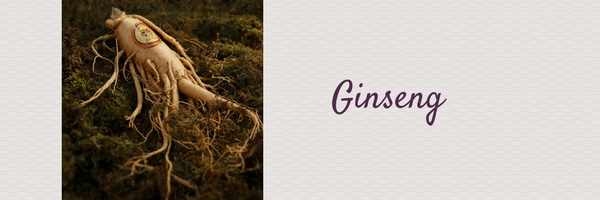
Have you tried Ginseng? This powerful herb is both wildly popular and often misunderstood, because people aren’t aware of the multiple varieties and their (very different!) benefits.
- American Ginseng grows wild and is also farmed here in WI; this local Ginseng is some of the best you can find. Cultivated under tents that simulate the forest environment where Wild Ginseng grows, it needs to grow for 4+ years before harvest (and older plants have even more potent medicinal properties!)
- Asian Ginseng (also called “Oriental Ginseng” or “Panax Ginseng”) includes both Chinese Ginseng and Korean Ginseng, which are the same plant, processed differently. Chinese Ginseng is dried and retains the whitish color of the root, while Korean Ginseng is steam-cured and then dried, resulting in a more potent medicine and signature reddish color.
Some other medicinal root plants are also called Ginseng, such as Siberian Ginseng, which is grown mainly in Eastern Siberia. It’s not truly Ginseng, but rather a cousin to the American and Asian varieties. “Siberian Ginseng” has been labeled as such for marketing purposes; it is much less potent than true Ginseng, and far fewer studies have been conducted on it’s effects.
The different types of Ginseng have very different properties, so it’s important to know which type you’re working with.
Korean Ginseng is the most popular variety; it’s used frequently in Traditional Korean and Traditional Chinese Medicine (TCM), and has also been used by over 6 million Americans. Korean Ginseng is a “Warming” herb, believed by TCM to stimulate yang energy. It is taken to improve circulation, increase blood flow, revitalize the body, aid recovery from weakness after illness, and as a general energy-booster. Chinese Ginseng has these same properties, but in a less potent form that’s more appropriate for children, the elderly or the very ill.
American Ginseng is considered a “cooling” herb, believed by TCM to stimulate yin energy. It promotes nourishment, clears excess heat, and calms the body. Traditionally used to negate the effects of fatigue and stress, American Ginseng may also affect insulin levels in the body and help to lower blood sugar.
All Ginsengs are Adaptogens, which help the body adapt to stress and normalize functioning, particularly in the adrenal system, which regulates hormone levels. Both American and Asian Ginsengs also have a “cumulative” effect, building up in the system as you use them over a period of time.
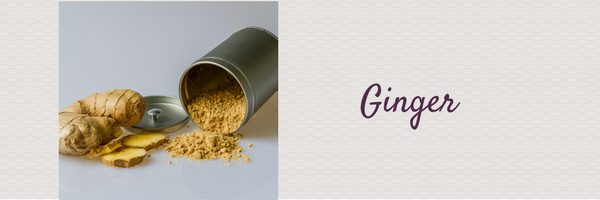
Another powerful, medicinal root is Ginger: The #1 Warming Herb!
Ginger can ease menstrual cramps, promote circulation, and may reduce muscle pain and soreness. It is extremely effective in treating nausea, including pregnancy nausea, and may also have anti-inflammatory and antioxidant properties. Ginger does not have a cumulative effect like Ginseng: rather, it acts in the body immediately, then dissipates.
Fresh ginger is more potent than ground, and is common in many types of Asian cuisine. Ginger Tea is a simple, effective and delicious delivery system for ginger (and you can use either prepared teabags or just some slices of fresh ginger in hot water!)
Incorporating ginger into your cooking is also a great way to reap its rewards. Curries, Stir Fries, Rice Dishes and most marinades work well with some fresh ginger. Try popping a whole ginger root in the freezer, and then grating small amounts as needed with a microplane grater–this trick makes it easy and convenient to have the flavor and benefits of fresh ginger anytime!

Like Ginger, Turmeric can be used either fresh or ground. It imparts a lovely color when used in cooking!
Turmeric has a wide range of health benefits, with the foremost being it’s anti-inflammatory properties. As a natural painkiller and antioxidant, it can be extremely beneficial to those with Arthritis, Joint Pain, or recovering from surgery. It is also effective in easing the discomfort of digestive complaints, and for several gastro-intestinal issues (including GERD and irritable bowel syndrome.)
This great article has a comprehensive list (with links to studies), outlining 100 Benefits of Turmeric: https://www.turmericforhealth.com/turmeric-benefits/100-awesome-health-benefits-of-turmeric-curcumin
One easy way to incorporate Turmeric into your diet is by drinking “Golden Milk”: Rose @ Resolution recommends using turmeric, black pepper, ginger, cardamom, nutmeg, some adaptogenic herbs like shatavari or ashwaghanda & honey– in milk, warmed & frothed. Black Pepper is an important ingredient in Golden Milk or any other preparation with Turmeric, because the Black Pepper increases the bioavailability of Turmeric’s beneficial compounds. (They also taste great together!)
*Please consult your health care provider before beginning any herbal medicine regimen, and always inform all health care providers about herbal supplements you are taking. Herbs can interact with other herbs, supplements or medications, and may cause side effects.*
Want a great recipe that includes Ginger, Turmeric and a whole bunch of other amazing Warming Spices? Try Spike’s Spicy Pumpkin Muffins!
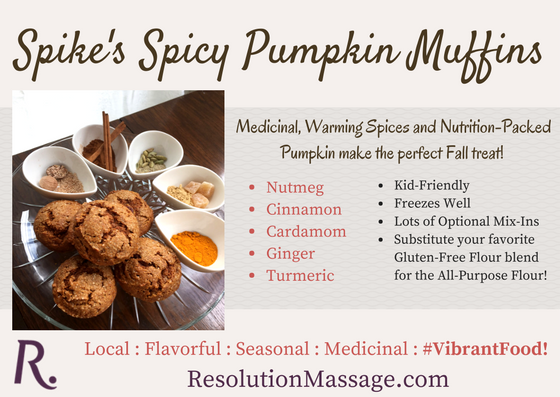
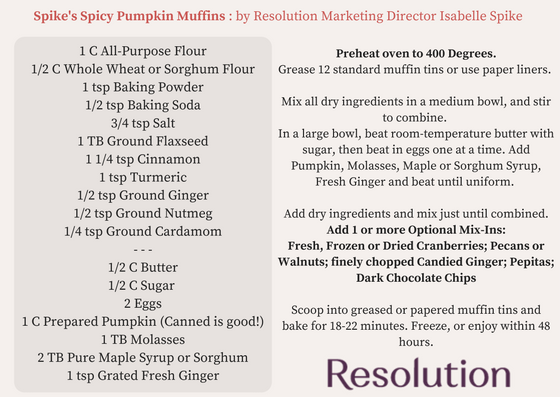
Thanks for joining us to learn about Medicinal Herbs and Warming Spices! We hope you try some new recipes featuring Warming Spices this Fall and Winter!
-Isabelle @ Resolution
Looking to read more? Here are a few of the sources we used in researching this article:
Ginger
https://unitproj.library.ucla.edu/biomed/spice/index.cfm?displayID=15
http://www.whfoods.com/genpage.php?tname=foodspice&dbid=72
Turmeric:
https://unitproj.library.ucla.edu/biomed/spice/index.cfm?displayID=26
https://www.turmericforhealth.com/turmeric-benefits/health-benefits-of-black-pepper-and-turmeric
Ginseng:
http://www.livestrong.com/article/414544-panax-ginseng-vs-siberian-ginseng/
http://www.webmd.com/vitamins-supplements/ingredientmono-967-AMERICAN+GINSENG.aspx
